
A typical Toynbee Tile
There are many ways one can express oneself in today’s world. I choose the written word, others choose song, still others choose dance, photography, sculpture, paint, and even graffiti, and that last one presents some interesting, if cryptic, works for us to ponder.
Even within that…genre…of art, there are many types, styles, and motivations. There are many perspectives on its value as a medium of art, and as a method of communication, but it can hardly be denied that as a form of self-expression, graffiti is as effective as any other, perhaps more so.
Of course, there are forms of graffiti that are more difficult to classify as a form of art, even though much effort goes into its design and execution, and its impact on our culture is undeniable. The issue seems to be that the controversial and sometimes political nature of the form gets in the way, but as many would argue, myself included, the message conveyed by art is nearly always political, and if successful, is always intended to be controversially transformative.
There are works of graffiti that you might not readily identify as a work of art, though they are, undeniably.

One of the Uxbridge Markers
Very recently, reported through a YouTube video, a series of markers has been found spray painted on the ground in West London, UK. The markers, which take the form of symbols – a square center dot, surrounded by radiating narrow triangles, causing the entire marker to appear as a stylized sun or possibly a windmill – appeared suddenly on the roadway near the intersection of Grove Road and Grove Way in Uxbridge, London. The YouTube video, shot and uploaded by an English woman going by the name Maria Speechley, clearly shows the symbols or markers as found, which are all white and apparently quite fresh. Speechley reported the find to the Uxbridge news outlet getwestlondon, who published a public call for more information and further sightings on March 26.
Speechley, through the video, offers commentary and excited speculation about the appearance and purpose of the markers, claiming that no one knows who made them, or when. She briefly theorises that they could have some secret purpose, possibly related to aliens or a secret society, but Alan Hayes of getwestlondon wisely reminds that local police have warned of these symbols, citing that they are sometimes used by nefarious types to mark possible locations for burglary.
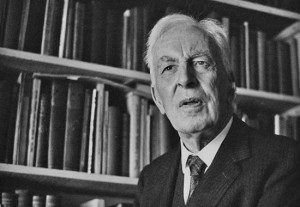
Arnold J. Toynbee
One thing is perfectly clear, however, and that is that such graffiti, as this could only be described, serves its purpose well, in that it has caught the attention of passers-by, and has conveyed a message, inaccurate as it may be.
The strange and cryptic nature of the Uxbridge symbols reminds of other, much more mysterious works of graffiti art around the world. Specifically, the Toynbee Tiles.
The Toynbee Tiles are a series of placards that have somehow been embedded into the pavement of roadways in various cities across the US. They typically consist of a rectangular sign, often about the size of an American license plate (30cm by 15cm), and they display some variation of the text below.
TOYNBEE IDEA
IN MOViE `2001
RESURRECT DEAD
ON PLANET JUPITER
So what, exactly, does that mean? No one really knows, but there are several theories.
Just based on the text alone, there is a definite reference to Stanley Kubrick’s 2001: A Space Odyssey. Both through the words “movie ‘2001” and by the reference to Jupiter. Some versions of the tiles actually name Kubrick directly, but this might be explained away.
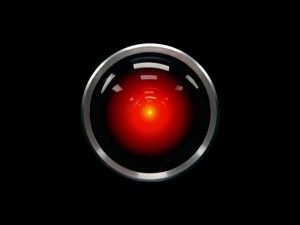
Hal, from Kubrick’s 2001: A Space Odyssey
There’s also the clear reference to Arnold J. Toynbee, who was a prolific British historian best known for his study of the rise and fall of 26 different civilizations throughout human history. Some argue that this isn’t a direct reference to Toynbee, but rather is a reference to Ray Bradbury’s short story called The Toynbee Convector, which was inspired, at least in name, by A.J. Toynbee.
Those references, however, are the only parts of the Toynbee Tile mystery that are clear, or relatively clear, as the case may be. What they mean, either the tiles or the references, is still totally open for debate. As anyone who’s seen 2001 can tell you, the reference to Jupiter and resurrecting the dead comes straight from Kubrick’s imagination, but what it means with respect to Toynbee or the purpose of the tiles remains a complete mystery.
The originator of the tiles remains unidentified, even though a Toynbee Tile researcher claims to have uncovered several letters written by the maker in the early 1990’s, which apparently allude to a passage from Arnold Toynbee’s book Experiences (Pages 139-142):
“Human nature presents human minds with a puzzle which they have not yet solved and may never succeed in solving, for all that we can tell. The dichotomy of a human being into ‘soul’ and ‘body’ is not a datum of experience. No one has ever been, or ever met, a living human soul without a body… Someone who accepts—as I myself do, taking it on trust—the present-day scientific account of the Universe may find it impossible to believe that a living creature, once dead, can come to life again; but, if he did entertain this belief, he would be thinking more ‘scientifically’ if he thought in the Christian terms of a psychosomatic resurrection than if he thought in the shamanistic terms of a disembodied spirit.”
The possible connection to Bradbury’s The Toynbee Convector, might suggest that the originator wished to convey the message that humanity needs to, in his or her view, strive for greater achievements in order to successfully move into the future. Some have said that the reference to Jupiter means that the message is to travel to and colonise the planet. A lofty goal indeed.
There are others who believe that there are connections to Arthur C. Clark’s Jupiter V, and at least one person believes that the tiles are an homage to playwright David Mamet and his 1983 play titled 4A.M. Namely Mamet himself, who has often claimed to be greatly flattered by the honour.
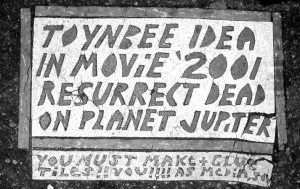
Some of the Toynbee Tiles attempt to incite others to create and lay their own
Most of the tiles, of which there have been many over the years, first appeared in Philadelphia in the early-to-mid 1980’s, but they continue to appear across the US even today, and at least one has appeared in South America. Though most if not all of the more recent examples are certain to be copy-cat tiles, placed by enthusiasts in order to honour the originator or to commemorate certain associated dates.
So far, the most compelling theory of how they are created and applied to the pavement as they are, was advanced by tile enthusiast Justin Duerr, who claims that they are a composite form made of layers of linoleum and some form of asphalt glue (whatever that may actually be), wrapped in tar paper. Others claim that this composite construction is laid on roadways, inside the tar paper, and the action of vehicles driving over them crushes the form into the pavement and wears away the paper, ultimately revealing the tile.
There are, at least superficially, some parallels between the Toynbee Tiles and the Uxbridge markers, but perhaps we’re reading a bit much into it. Whatever they are, in either case, the mystery may be worth more than any answers. As it is, we are free to imagine that the tiles or the markers are some strange vestige of a world hidden away from us, a romantic and perhaps dark connection to a storyline beyond our understanding, and in that way it inspires our imaginations to conjure a reality that is larger than our own. If, through finding answers to this mystery, we find that the elements of these things lie in something mundane, or nefarious, or – heaven forbid – commercial and manipulative, we would be worse off for it.
For now we can say that we do not know what they are or why they exist, we can revel in the idea that they hold a meaning worth protecting, and that makes them precious in their own right.

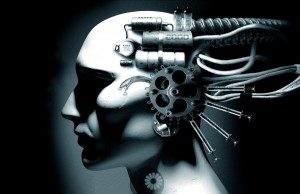 I recently brought you some discussion on the concept known as senescence, or in layman’s terms, the process of ageing. My
I recently brought you some discussion on the concept known as senescence, or in layman’s terms, the process of ageing. My  One of the leading theories about the cause of senescence is embodied in the term pseudohypoxia. Hypoxia is the term that described the process of cellular oxygen starvation, but pseuohypoxia refers to a different kind of cellular starvation. All of the cells in our bodies require certain things to remain functional and efficient. Oxygen is one of those things, obviously. Other nutrients and chemicals are also necessary, but optimal cellular function depends on maintaining very specific ratios of various compounds, and the reduction of certain compounds, NAD+ for instance, has the effect of impairing communication between mitochondria and the cellular nucleus. (NAD+ is an acronym representing the chemical compound nicotinamide adenine dinucleotide, but for the purpose of understanding what’s happening, knowing what that compound really is, isn’t necessary.)
One of the leading theories about the cause of senescence is embodied in the term pseudohypoxia. Hypoxia is the term that described the process of cellular oxygen starvation, but pseuohypoxia refers to a different kind of cellular starvation. All of the cells in our bodies require certain things to remain functional and efficient. Oxygen is one of those things, obviously. Other nutrients and chemicals are also necessary, but optimal cellular function depends on maintaining very specific ratios of various compounds, and the reduction of certain compounds, NAD+ for instance, has the effect of impairing communication between mitochondria and the cellular nucleus. (NAD+ is an acronym representing the chemical compound nicotinamide adenine dinucleotide, but for the purpose of understanding what’s happening, knowing what that compound really is, isn’t necessary.) What’s truly incredible about this study is how they went about confirming the above hypothesis. Essentially, they fed NAD+ to mice, and what happened is nothing short of amazing.
What’s truly incredible about this study is how they went about confirming the above hypothesis. Essentially, they fed NAD+ to mice, and what happened is nothing short of amazing.
 With all of the pyramids around the world, it seems clear that the ancients had an affinity for lasting architecture. They built things to withstand the winds of time. At least, they built certain things to last. Temples, tombs, ceremonial chambers and all kinds of sacred sites litter the landscape all across this planet, each one from an age lost to antiquity. Often, though, what didn’t survive alongside these megaliths, was any notion about what they were, why they were built, or how they were built. Sure, scholars are relatively certain that they’ve deciphered lost texts and cryptic hieroglyphics, and thus believe they have a decent grasp on answers to those questions, but there are many people who don’t agree that conventional wisdom in this regard is all that solid.
With all of the pyramids around the world, it seems clear that the ancients had an affinity for lasting architecture. They built things to withstand the winds of time. At least, they built certain things to last. Temples, tombs, ceremonial chambers and all kinds of sacred sites litter the landscape all across this planet, each one from an age lost to antiquity. Often, though, what didn’t survive alongside these megaliths, was any notion about what they were, why they were built, or how they were built. Sure, scholars are relatively certain that they’ve deciphered lost texts and cryptic hieroglyphics, and thus believe they have a decent grasp on answers to those questions, but there are many people who don’t agree that conventional wisdom in this regard is all that solid. Will our legacy civilizations be just as perplexed by the purpose and significance of our buildings, should any survive that long? Will they argue amongst themselves about whether we had the technical expertise and engineering prowess to construct the wonders of our ancient time?
Will our legacy civilizations be just as perplexed by the purpose and significance of our buildings, should any survive that long? Will they argue amongst themselves about whether we had the technical expertise and engineering prowess to construct the wonders of our ancient time?
 Cultural evolution progresses at a startling rate; in a matter of 300 years, whole language systems can become almost unrecognisable. Iconography becomes distorted and knowledge bases shift between world powers. War, emigration, social and financial collapse, natural disaster, all of these things could change the course of our cultural evolution en-route to unimaginable places in the future, and once our progeny reach their destination, will they recognise what they see behind them, or will they be just as baffled by their past, as we are by ours?
Cultural evolution progresses at a startling rate; in a matter of 300 years, whole language systems can become almost unrecognisable. Iconography becomes distorted and knowledge bases shift between world powers. War, emigration, social and financial collapse, natural disaster, all of these things could change the course of our cultural evolution en-route to unimaginable places in the future, and once our progeny reach their destination, will they recognise what they see behind them, or will they be just as baffled by their past, as we are by ours? I’ve had a computer nearly my entire 33 years. In fact, I still remember the command line sequence to boot up games on my long dead Commodore 64(LOAD”*”,8,1 if you cared). I’ve had imbedded in me the idea that a simple command line, or the pressing of ‘start’ can call into existence, rather quickly, an entire new reality in which I could exist. And, because of Commodore 64, I think Chaos Magick matters in this, the “New Aeon.”
I’ve had a computer nearly my entire 33 years. In fact, I still remember the command line sequence to boot up games on my long dead Commodore 64(LOAD”*”,8,1 if you cared). I’ve had imbedded in me the idea that a simple command line, or the pressing of ‘start’ can call into existence, rather quickly, an entire new reality in which I could exist. And, because of Commodore 64, I think Chaos Magick matters in this, the “New Aeon.” Why do we assign so much importance to coincidences? Let me paint a picture for you…
Why do we assign so much importance to coincidences? Let me paint a picture for you…



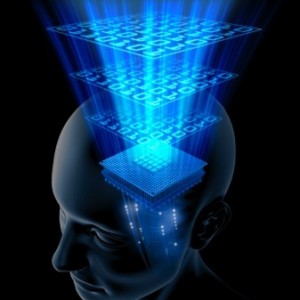 I’m reading a book. It’s a book written by a friend. I call him a friend even though I’ve not met him, nor, likely, will I ever meet him. That isn’t why I’m reading it though. I’m reading it because it covers a topic that is dear to me, a topic that has vexed me for many, many years: Death.
I’m reading a book. It’s a book written by a friend. I call him a friend even though I’ve not met him, nor, likely, will I ever meet him. That isn’t why I’m reading it though. I’m reading it because it covers a topic that is dear to me, a topic that has vexed me for many, many years: Death.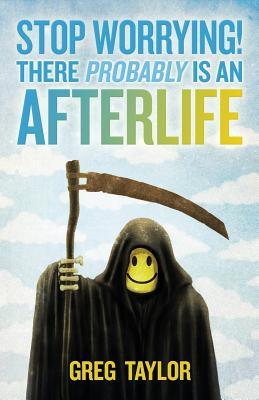 Death-bed visions are, much like near-death experiences, almost archetypal to the process of dying. At first glance they seem like an esoteric experience based in delusion, or hallucination, but upon further reading, one inevitably finds that not only are death-bed visions far more common than most anyone realises, but they are surprisingly similar among accounts. There are literally thousands of documented death-bed vision experiences, and, even by the most conservative estimates, millions of undocumented experiences. Depending on who you ask, these experiences seem nearly ubiquitous.
Death-bed visions are, much like near-death experiences, almost archetypal to the process of dying. At first glance they seem like an esoteric experience based in delusion, or hallucination, but upon further reading, one inevitably finds that not only are death-bed visions far more common than most anyone realises, but they are surprisingly similar among accounts. There are literally thousands of documented death-bed vision experiences, and, even by the most conservative estimates, millions of undocumented experiences. Depending on who you ask, these experiences seem nearly ubiquitous.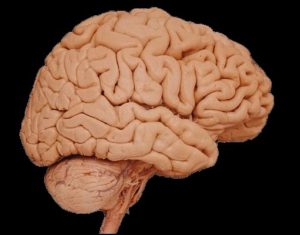 This position is valid. It’s demonstrated in the phenomena associated with the afterlife, though in the interest of intellectual honesty, that phenomena isn’t readily accepted by those who don’t subscribe to any kind of religious tradition. It is largely unquantifiable, which is precisely why it sits in opposition to determinism. That doesn’t mean it should be dismissed, it means only that it should be recognised as less valuable to the discussion than some would prefer. It doesn’t end there though.
This position is valid. It’s demonstrated in the phenomena associated with the afterlife, though in the interest of intellectual honesty, that phenomena isn’t readily accepted by those who don’t subscribe to any kind of religious tradition. It is largely unquantifiable, which is precisely why it sits in opposition to determinism. That doesn’t mean it should be dismissed, it means only that it should be recognised as less valuable to the discussion than some would prefer. It doesn’t end there though. The same is true for any object that exists in any medium, such as the atmosphere of the earth for instance. What we call air is no different than water, in that it is made up of fundamental particles; molecules and atoms, and as a result, those things that exist within it are fundamentally connected to any and all other objects that exist within the same medium.
The same is true for any object that exists in any medium, such as the atmosphere of the earth for instance. What we call air is no different than water, in that it is made up of fundamental particles; molecules and atoms, and as a result, those things that exist within it are fundamentally connected to any and all other objects that exist within the same medium. The false analogy between televisions and brains offers an inaccurate picture of the issue. Firstly, a TV has an obvious connection to the signal provider – a cable, or in some cases a wireless transceiver – but our brains do not. Mammalian brains, or even lower order brains for that matter, have no apparatus for sending or receiving signals of any kind. In the case of a television, if you physically disconnect the source of the signal, the set will not work (properly). You can even go so far as to enclose the TV in a Faraday cage, and the effect will be that no signal of any kind can reach its transceiver, thus it will not work.
The false analogy between televisions and brains offers an inaccurate picture of the issue. Firstly, a TV has an obvious connection to the signal provider – a cable, or in some cases a wireless transceiver – but our brains do not. Mammalian brains, or even lower order brains for that matter, have no apparatus for sending or receiving signals of any kind. In the case of a television, if you physically disconnect the source of the signal, the set will not work (properly). You can even go so far as to enclose the TV in a Faraday cage, and the effect will be that no signal of any kind can reach its transceiver, thus it will not work. I can already hear the argumentative machinations of the dualists winding up. “But there could be an energy that we just haven’t discovered yet!” Sure, there could, but we’ve seen zero evidence of such an energy in all other endeavours. Nature isn’t that wasteful. The four fundamental forces are found everywhere. They have an effect on everything…all four of them. How could it be that there is another energy that only affects consciousness and which doesn’t interact with the other four in any way?
I can already hear the argumentative machinations of the dualists winding up. “But there could be an energy that we just haven’t discovered yet!” Sure, there could, but we’ve seen zero evidence of such an energy in all other endeavours. Nature isn’t that wasteful. The four fundamental forces are found everywhere. They have an effect on everything…all four of them. How could it be that there is another energy that only affects consciousness and which doesn’t interact with the other four in any way?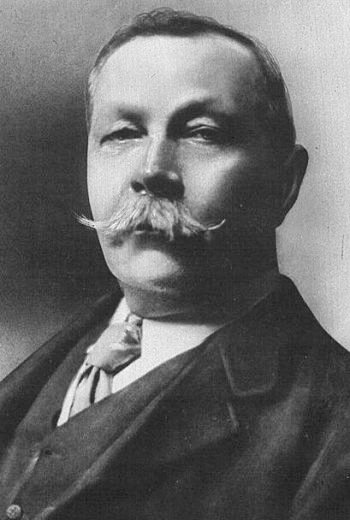
 In his quest for answers, Conan Doyle befriended the one and only Harry Houdini. Oh the conversations those two must have had! Though, Houdini wasn’t a man to be fooled by the trifling ploys of little girls; he was arguably the most successful debunker of charlatan psychics, mediums, and flim-flam artists that there ever was. Despite his reputation as possibly the best magician and escape artist that ever lived, Houdini was an avowed skeptic, and was vocal about the fraud being perpetrated by those in the spiritualist movement. And thus, their brief friendship came to an embarrassing and very public end when they couldn’t reconcile their philosophical differences. Interestingly, Conan Doyle continued to assert that Houdini himself had supernatural or divine powers, most notably in his book The Edge of the Unknown (1930). Not surprisingly though, Houdini vehemently denied this, and even tried to show Conan Doyle how the various tricks were done, but was apparently unsuccessful in convincing the great writer of the truth.
In his quest for answers, Conan Doyle befriended the one and only Harry Houdini. Oh the conversations those two must have had! Though, Houdini wasn’t a man to be fooled by the trifling ploys of little girls; he was arguably the most successful debunker of charlatan psychics, mediums, and flim-flam artists that there ever was. Despite his reputation as possibly the best magician and escape artist that ever lived, Houdini was an avowed skeptic, and was vocal about the fraud being perpetrated by those in the spiritualist movement. And thus, their brief friendship came to an embarrassing and very public end when they couldn’t reconcile their philosophical differences. Interestingly, Conan Doyle continued to assert that Houdini himself had supernatural or divine powers, most notably in his book The Edge of the Unknown (1930). Not surprisingly though, Houdini vehemently denied this, and even tried to show Conan Doyle how the various tricks were done, but was apparently unsuccessful in convincing the great writer of the truth.
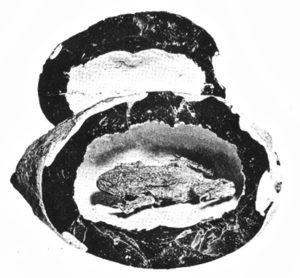

 You can see why the scientific establishment just shakes its proverbial head and walks away amid a cloud of frustrated exhaustion in the face of our tomfoolery. These reports exist though, and are of the sort that aren’t easy to dismiss, so we’re in a bit of a quandary.
You can see why the scientific establishment just shakes its proverbial head and walks away amid a cloud of frustrated exhaustion in the face of our tomfoolery. These reports exist though, and are of the sort that aren’t easy to dismiss, so we’re in a bit of a quandary. Have you ever had insomnia? Sure, most people have at some point in their lives. It’s one of those things that gets generalised and used to mean “I didn’t sleep so well last night.” And while that’s technically an example of insomnia, those of us who truly suffer from extended bouts of sleeplessness have little patience for that diminishing attitude.
Have you ever had insomnia? Sure, most people have at some point in their lives. It’s one of those things that gets generalised and used to mean “I didn’t sleep so well last night.” And while that’s technically an example of insomnia, those of us who truly suffer from extended bouts of sleeplessness have little patience for that diminishing attitude.
 This shouldn’t be possible. Sleep deprivation causes – almost universally – fatigue, clumsiness, weight loss/gain, diabetes, decreased cognitive function, headaches, hallucinations, depression, hand tremors, seizures, mania, and ultimately death, all over a period of months. These symptoms and effects are well documented and studied, so how is it that Ines Fernandez and Ngoc Thai – and presumably others – could remain awake for decades, yet suffer no ill-effect.
This shouldn’t be possible. Sleep deprivation causes – almost universally – fatigue, clumsiness, weight loss/gain, diabetes, decreased cognitive function, headaches, hallucinations, depression, hand tremors, seizures, mania, and ultimately death, all over a period of months. These symptoms and effects are well documented and studied, so how is it that Ines Fernandez and Ngoc Thai – and presumably others – could remain awake for decades, yet suffer no ill-effect.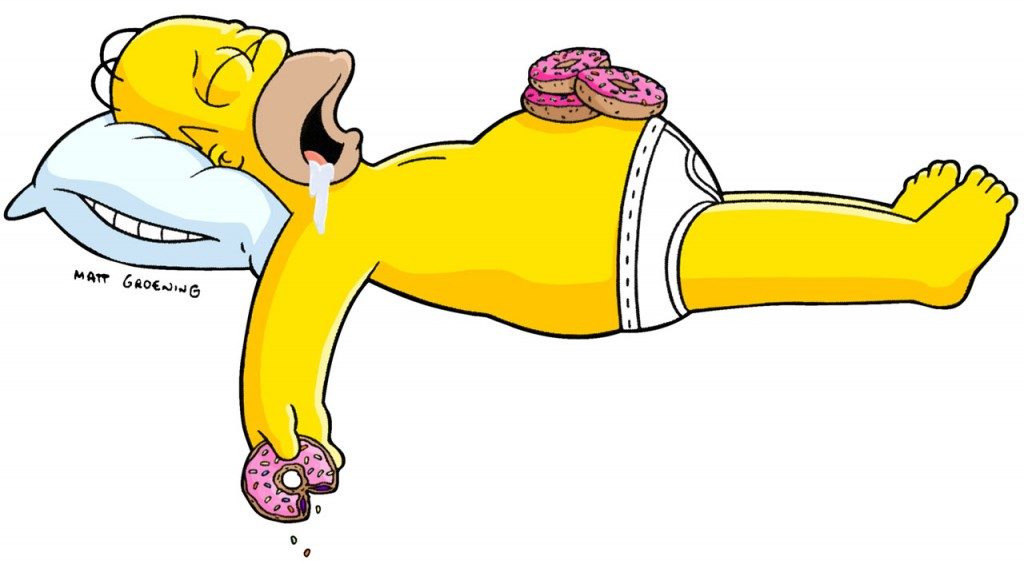 That almost seems like an April fool’s joke from the medical community, but it really is the cause of many of these claims. It’s classified as a sleep disorder through the International Classification of Sleep Disorders (ICSD), though it’s more of a psychological condition than a physical ailment. The key to SSM is that those who suffer with it will earnestly claim that they haven’t slept, or have slept very little, but during sleep studies, they show normal sleep patterns.
That almost seems like an April fool’s joke from the medical community, but it really is the cause of many of these claims. It’s classified as a sleep disorder through the International Classification of Sleep Disorders (ICSD), though it’s more of a psychological condition than a physical ailment. The key to SSM is that those who suffer with it will earnestly claim that they haven’t slept, or have slept very little, but during sleep studies, they show normal sleep patterns.